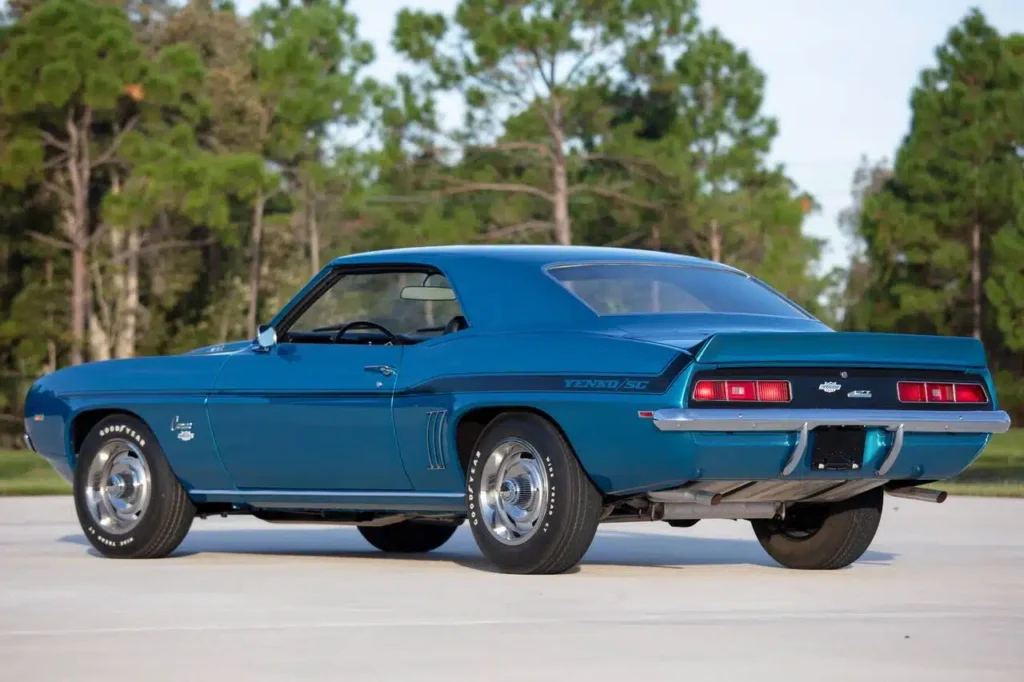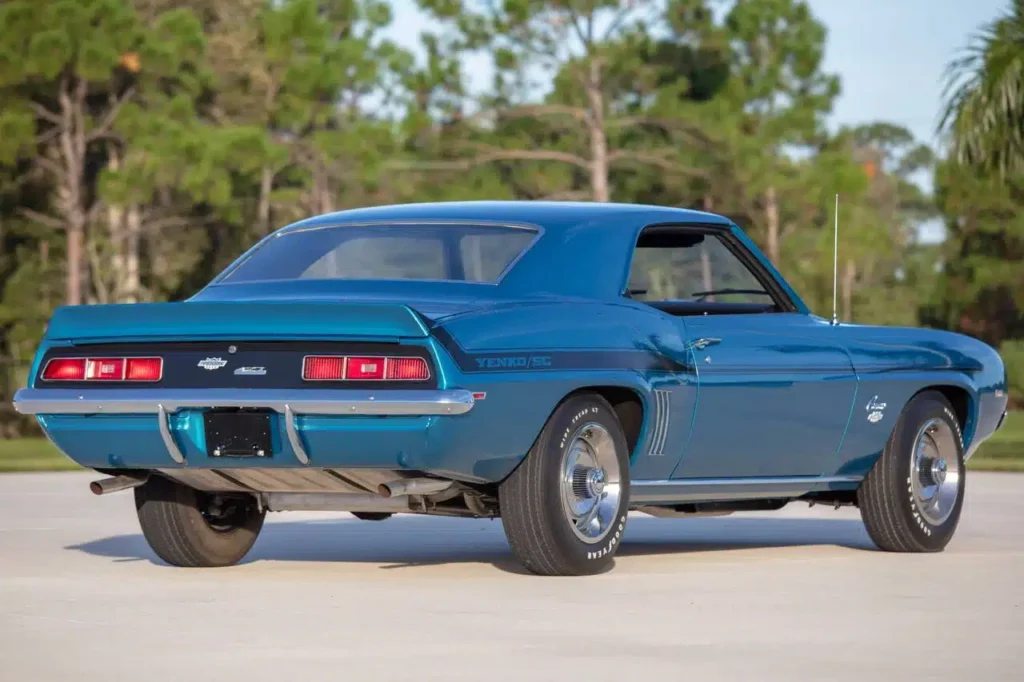This muscle car is so powerful it was scary to drive and almost made illegal
- The 1969 Chevy Yenko Camaro was so powerful it was almost made illegal
- Don Yenko once said it was the only car that ever scared him
- In full acceleration, the car almost felt uncontrollable

The 1969 Chevy Yenko, particularly the Yenko Nova S/C 427, is often cited as one of the most dangerous muscle cars ever made due to its extreme power-to-weight ratio and the era’s minimal safety features. Built by Don Yenko, a Pennsylvania-based Chevrolet dealer and racer, this car was a product of his vision to push Chevrolet performance beyond factory limits, leveraging the Central Office Production Order (COPO) system to create street-legal monsters.
Origins of the Yenko Nova
Don Yenko, a skilled driver and performance enthusiast, had a history of modifying Chevrolets for racing and street use, starting with the Corvair-based Yenko Stinger in 1966. By 1969, Yenko turned his attention to the compact Chevy Nova, a lightweight platform ideal for maximizing performance. General Motors had a corporate mandate limiting engines in smaller cars like the Camaro and Nova to 400 cubic inches to avoid cannibalizing Corvette sales. However, Yenko exploited the COPO system, originally designed for fleet orders, to bypass these restrictions and install the massive L72 427-cubic-inch V8, typically reserved for the Corvette and full-size Chevelles.The 1969 Yenko Nova S/C (Super Car) 427 was born when Yenko ordered 37 Nova SS models equipped with the 375-hp L78 396-cubic-inch engine. At his Canonsburg dealership, his team swapped these for the 425-hp (realistically closer to 450 hp) L72 427 V8, creating a compact car with unprecedented power. One additional prototype with an automatic transmission was built, bringing the total to 38 units.

Why It Was Dangerous
The Yenko Nova’s reputation as a “dangerous” muscle car stemmed from several factors:
- Power-to-Weight Ratio: The Nova’s lightweight body, weighing around 3,300 pounds, combined with the 427 V8’s estimated 450 hp and 460 lb-ft of torque, gave it a power-to-weight ratio that rivaled supercars of the era. It could hit 60 mph in 5.5 to 6 seconds and run the quarter-mile in the low 12-second range with street tires, or high 11s with headers and slicks. This made it brutally fast but hard to control, especially for inexperienced drivers.
- Minimal Safety Features: The 1969 Nova lacked modern safety equipment like airbags, ABS, or traction control. It came with basic power front disc brakes and rear drums, which struggled to manage the car’s power. The suspension, while upgraded with the F41 heavy-duty package and a 12-bolt Positraction rear end with 3.55 or 4.10 gears, was still rudimentary for handling such a powerful engine in a compact chassis.
- Insurance and Liability Concerns: Chevrolet executives initially resisted Yenko’s plan to install the 427 in the Nova due to safety and liability concerns. The car’s extreme performance made it nearly uninsurable, as many companies refused to cover such a high-powered lightweight vehicle, further cementing its “lethal” reputation. Yenko took on the liability by performing the engine swaps in-house, absolving GM of responsibility.
- Driver Skill Requirement: Yenko himself described the 1969 Nova S/C 427 as “the wildest thing we ever did,” noting its potential to be lethal in the wrong hands. The car’s raw power, combined with its compact size and rear-wheel-drive setup, demanded skilled driving to manage wheelspin and maintain control, especially on public roads.

Features and Specifications
The 1969 Yenko Nova S/C 427 was a purpose-built performance machine with subtle but distinctive modifications:
- Engine: L72 427-cubic-inch V8, rated at 425 hp but likely producing closer to 450 hp, with 11.0:1 compression, a 780-cfm Holley carburetor, and a solid-lifter camshaft.
- Transmission: Muncie M21 four-speed manual (one prototype had a column-shifted automatic).
- Suspension and Brakes: F41 heavy-duty suspension with a 11/16-inch front anti-sway bar, stouter springs, and larger valving shocks; power front disc brakes and 9.5-inch rear drums.
- Rear End: 12-bolt Positraction with 3.55 or 4.10 gears.
- Wheels and Tires: 14×7-inch XT steel rims, 14×7 Rally wheels, or 14×6 Atlas mags with Yenko center caps.
- Styling: Minimalist Yenko branding with vinyl die-cut graphics, no bold SS stripes, and a domed tachometer on the hood. The interior featured a standard black vinyl bench seat and an AM radio.
- Colors: Available in eight colors, including Fathom Green, Hugger Orange, and Cadillac Nutmeg Firemist Metallic (one known example).
Performance and Legacy
The Yenko Nova’s performance was staggering for its time. At a 1969 test session in Canonsburg, a demonstrator with 8,000 miles ran a quarter-mile in 11.94 seconds at 114.5 mph, shocking track officials who paused to verify their timing equipment. This performance made it a favorite for drag racers and street enthusiasts, but its scarcity—only 37 units plus one prototype—added to its mystique.The car’s danger and exclusivity made it a legend, but rising insurance costs and stricter emissions regulations forced Yenko to pivot for 1970. The Yenko Deuce, a tamer Nova with the 360-hp LT1 350 V8, was introduced as a more insurable alternative, with 175 units sold. The 1969 Nova S/C 427 remains the pinnacle of Yenko’s audacity, a car that pushed the boundaries of what a compact muscle car could be.
Collectibility and Modern Impact
Today, the 1969 Yenko Nova is among the rarest and most valuable muscle cars. Of the 38 built, estimates suggest fewer than 30 survive, with pristine examples fetching upwards of $350,000 at auction. A unique Cadillac Nutmeg Firemist Metallic Nova, one of one, is a standout collector’s piece. Its rarity and raw performance make it a holy grail for Chevy enthusiasts, though clones are common due to its high value.The Yenko Nova’s legacy endures as a symbol of the muscle car era’s excess and ingenuity. Don Yenko’s ability to manipulate the COPO system and deliver uncompromising performance cemented his status as a legend. While the car’s “dangerous” reputation was partly due to its untamed power and the era’s lax safety standards, it remains a testament to an era when performance trumped practicality, and Yenko’s vision pushed Chevrolet to its limits.


